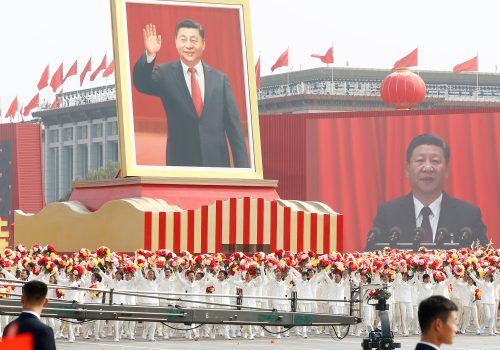Transatlantic tools: Harmonizing US and EU approaches to China
Close cooperation between the United States and the European Union is essential if advanced economies are to develop effective responses to the array of challenges presented by China. Washington and Brussels share concerns regarding competitive distortions arising through the state’s role in the Chinese economy, the use of advanced technologies to repress ethnic minorities and fuel its military, and the spread of authoritarian influence through the Belt and Road Initiative (BRI). However, there has been a lack of coordination and cooperation in recent years between the US and EU when it comes to responding to China’s policies and behaviors. Washington’s focus on risks to US economic and national security contrasts with an emphasis in Brussels on ensuring reciprocity and leveling the economic playing field. But, with the transatlantic relationship back on a better footing under the Biden administration, new structures for transatlantic dialogue being put in place, and a greater focus on the Indo-Pacific in both Washington and Brussels, this paper argues there is now an opportunity for the United States and Europe to learn from each other and harmonize some of their China-related efforts.
Three promising policy areas
To facilitate the transatlantic discussion, this policy brief takes a granular look at the full range of autonomous policy tools that have been developed in the United States and Europe over the past half decade. Among these tools, it identifies three policy areas where the cross-over potential is high that have not yet been given top priority under the EU-US Trade and Technology Council (TTC). For each, the paper describes EU and US approaches to date, presents the case for greater transatlantic coordination, outlines possible concrete next steps, maps out barriers to greater harmonization, and proposes avenues for overcoming them.
Area 1: Competition and subsidies
In the short run, this paper proposes that the EU and the United States could carry out a joint stocktaking of China’s distortive economic practices and their negative global spillovers. In the medium run, the United States might also consider the establishment of a similar set of tools. For example, to address the issue of subsidized Chinese investment, it could explore expanding the purview of the Committee on Foreign Investment in the United States (CFIUS).
Area 2: Forced labor and human rights
In the short run, the EU and the United States would benefit from exchanging best practices for engaging with industry on human-rights-related concerns. Both sides could also consider introducing joint structures to enhance information and intelligence sharing for import- and export-relevant cases. To facilitate the enforcement of import bans, the two partners could combine efforts to support the development of technologies, such as DNA-based molecular tagging, for the identification of goods made with forced labor. The EU could also consider introducing a limited version of the US Entity List for human-rights-related export controls. Lastly, the United States and EU should consider appointing a small transatlantic team of full-time staff for a fixed period of time that would be dedicated to working through the statutory, regulatory, and practical hurdles to alignment on trade and human-rights-related issues.
Area 3: Responding to China’s Belt and Road Initiative
This paper recommends that the US and EU begin by creating a shared set of facts and promote more transparency around China’s BRI. This could take the form of joint reports and data-gathering efforts. Second would be to put US and EU initiatives under a single multilateral label. Third, the EU, the US, and their partners should continue their efforts to define high-quality infrastructure standards under the guise of the G7, G20, or the OECD. Fourth, the EU and the US could explore co-funding ITAN-like instruments–i.e., technical assistance to help countries negotiate sustainable infrastructure.
Related content

At the intersection of economics, finance, and foreign policy, the GeoEconomics Center is a translation hub with the goal of helping shape a better global economic future.
Image: U.S. President Joe Biden, European Council President Charles Michel and European Commission President Ursula von der Leyen attend the EU-US summit, in Brussels, Belgium June 15, 2021. REUTERS/Yves Herman. [RTXDAG3T]


